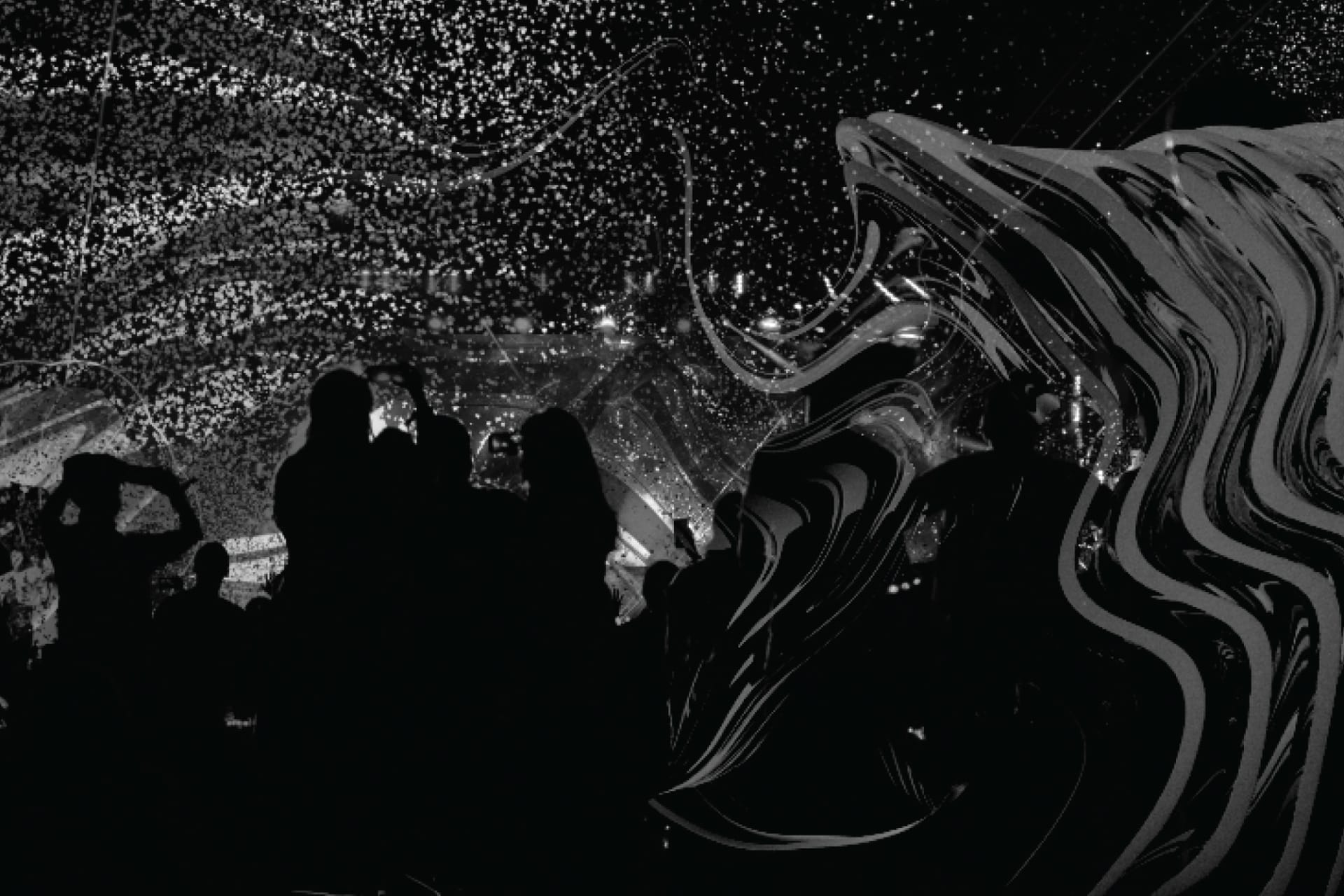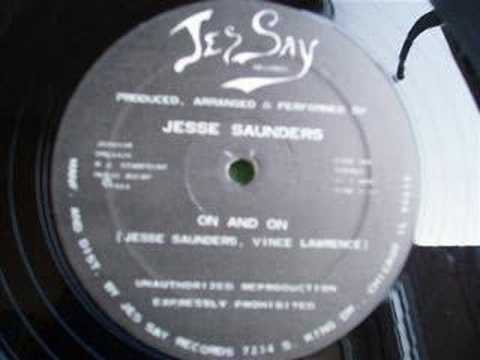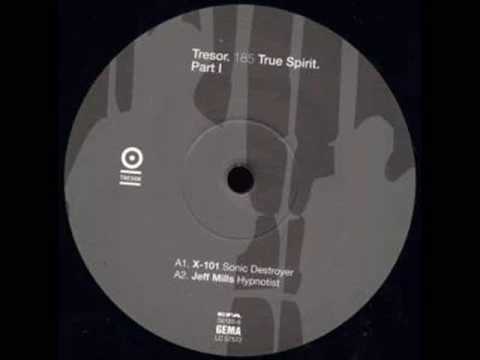

Electronic Music Is Black Protest Music
Clubbing and its culture of escapism originated in Black and Brown communities. It's time to understand exactly what this means.
About a year before George Floyd was murdered by white ex-police officer Derek Chauvin, the two were co-workers at Minneapolis latin nightclub El Nuevo Rodeo. 46-year-old Floyd, described by family and friends as “a gentle giant,” was a security guard at the downtown Salvation Army, but held several jobs, including driving trucks and, very recently, serving as an occasional bouncer inside at El Nuevo’s “urban” music nights. 44-year-old Chauvin, meanwhile, worked off-duty at the venue for over 17 years and patrolled outside. The two never met on the job and only crossed paths on that tragic Memorial Day evening.
The fatal event demonstrates Chauvin’s racist brutality at its coup de grâce, but a history of misconduct trailed him long before the incident. He had 17 civilian complaints against him during his two-decade-long career. El Nuevo’s former business owner Maya Santamaria told the Twin Cities Pioneer Press that she had to reprimand Chauvin after he went “overkill” during nights thrown by Black promoters. On occasion, he would mace the entire crowd and call for backup enforcement when a fight broke out. “The next thing you would know, there would [be] five or six squad cars,” Santamaria recalled.
Chauvin’s paroxysmal discomfort with Black communion and celebration comes as no surprise. Nightclubs, as it so happens, bear a long legacy of being one of the very few spaces in society where Black and Brown people are able to freely express themselves, where they are able to, for a few short hours, reclaim the bodies that are systematically regulated, attenuated, and deliberately destroyed by the state. In Ta-Nehisi Coates’ Between the World and Me, a book-length letter to his 15-year-old son explaining the demoralizing realities of being Black in the United States, he describes the act of code-switching in corporeal terms, as if it were a constant, wearying dance. “So I feared not just the violence of this world but the rules designed to protect you from it, the rules that would have you contort your body to address the block, and contort again to be taken seriously by colleagues, and contort again so as not to give the police a reason,” he writes. Coates’ passage describes a painstaking lifelong performance wherein the environment controls the Black body rather than the Black body willfully controlling itself.
Through this assessment, freeform dancing, the process of trusting an innate, rhythmic impulse that shirks a set of codified behaviors, then becomes a powerful gesture of resistance. It’s no coincidence that rave music and its surrounding culture of escapism originated in Black and Brown communities. These underground club scenes have traditionally provided a momentary refuge for sexual and ethnic minorities from persecution, but, even more powerfully, they have provided a space to cultivate the self-sustaining joy and pride that is so often stripped from them. Even the clandestine architectural legacy of secret warehouses, invitation-only lofts, and murky basements at the city’s fringes mirrors the marginalization of the identities that partied within. For these reasons, electronic music is another form of Black and Brown protest music.
Just before the birth of house music in New York and Chicago in the early to mid-1980s, The New York Times reported an alarming concentration of Black poverty across the United States’ 50 metropolitan areas. Census figures showed that, in New York alone, the number of poor African Americans increased from 311,841 in 1970 to 452,030 by 1980. Meanwhile, in Chicago, according to the Chicago Urban League, the wealth disparity between white and Black people was greater than in any major city. The emergence of house music also coincided with the rise of the HIV/AIDs virus—an epidemic that initially affected white gay men but, over time, disproportionately killed Black men by 1996 due to government inaction and fatal social stigma.
The buoyant, jacking propulsions of house provided an antidote to this grim reality; the uplifting lyrics within foundational 1984 house track “On and on” by Jesse Saunders, for example, begs the audience to “Just dance until the beat is gone/ Say you must go on and on.” If we consider the vocals within its historical context, it’s both a plea to stay on the dance floor, away from the racial and homophobic tensions outside, and a statement of urgent reprieve amidst chaos. Decades before people started referring to Berghain as “Sunday church,” house founding father Frankie Knuckles, who was both Black and gay, referred to the club as a “church for people who have fallen from grace”; Larry Levan, his best friend, also described the club as a healing space, coining the term “Saturday Mass” at New York’s Paradise Garage.
This bedrock of sonic liberation also formed the basis of techno music. During the genre’s birth in the late 1980s and early 1990s, its hometown of Detroit was already in the grips of debilitating unemployment, inner city violence, and heroin and crack cocaine addiction after the decentralization of its automobile factories into the suburbs during the postwar period. In “The Tragedy of Detroit,” Times reporter Ze’Ev Chafets recounts “Devil’s Night” in the fall of 1986, a scene of incendiary frustrations that is eerily prescient: “Houses, abandoned buildings, even unused factories burned to the ground in an orgy of arson that lasted for 72 hours… Police helicopters circled overhead and fire trucks, sirens blaring, raced from one conflagration to another.” Chafets also interviewed a mother who lost her 16-year-old son to gun violence. “Our sons are at risk—to suicide, murder, jail and hopelessness. Really it’s genocide; the enemy is the society that has forced the situation on them,” she said.
But when the techno’s progenitors, the “Belleville Three” made up of Juan Atkins, Derrick May, and Kevin Saunderson, reacted to their post-industrial environs, they synthesized a new, Afrofuturist configuration of dance music. Techno was created as a science fiction inquiry into Black freedom. The trio’s contributions are so remarkable because, as with all Afrofuturist music and culture, it projects Blackness into an potent prophecy, in defiance of a society so hellbent on diminishing and destroying it. So for the Belleville Three and Underground Resistance, techno’s militant second wave, to have used their productions to interpolate themselves across space and time, to create a genre that remains an indomitable force in the industry today, is nothing short of a miracle.
One-half of electronic music’s origin story concerns itself with ideology; the other half concerns itself with money. Cornelius Harris, the label manager of UR, told New York Magazine’s Vulture, “People don’t typically look at [dance music] as business — they think it’s just a bunch of fun parties and whatnot. They don’t understand how the economics of it empowers people, especially when there aren’t a lot of other opportunities.” This explains why Black and Brown survival in its various forms is so deeply embedded in the DNA of club culture.
Yet, as house and techno migrated across the Atlantic in the mid-1980s, touching down into the UK, Germany, and eventually propagating into the far reaches of Ukraine and Poland, its European regional variants quickly became divorced from the genre’s original ethos of sublimating Black and Brown collective trauma into art. Although, this is not to say that the persevering sounds of the rave did not initially resonate with these European communities—far from it.
When house music first landed in England, it spread through a grapevine of Black communities, into south-central Manchester where there were already high levels of unemployment, but “at the bottom of the ladder” were young, single Black men. Facing a dearth of opportunities they, like their American counterparts, turned their sights to music. But there was an inflection point in the late 1980s for the genre, said community member Anthony Stevens. “People think house music got invented in ‘88—it’s because white people got on it. They were hearing about this music that young, Black kids were playing in the hood. There was no real, kind of white underground culture. There was really nothing there for young, white kids to kind of get their teeth into it. If you wanted to get into something, this house music was absolutely perfect.”
Stevens’ observation about house music points out how quickly electronic music’s watermark of struggle hooked a generation of young and adrift white people. Techno had a similar effect, most notably during the German reunification. The Wall fell in 1989—the same year that Underground Resistance was formed. By 1991, the outfit had already published their first 12″, “Sonic Destroyer,” on Tresor’s in-house imprint. Like Stevens, Harris recounted techno’s rapid uptake in the thinly veiled language of appropriation: “When UR went to Berlin, that ended up becoming the framework that Berlin built itself on, a type of model that people looking to do something independently could take and use to build their own scenes.” What the statement doesn’t exactly specify is that it was white people who took Black techno and co-opted it so heavily that they came to believe it was an inherent form of European cultural expression.
Journalist Felix Denk described in his VICE interview the ways in which Berlin natives believed that the club’s post-industrial architecture, “a subterranean vault with concrete floors and walls,” sculpted techno’s tonality. “When you listen to those records that came out on UR in 91/92, which had been produced after their first gig in Tresor, their sound seemed to have gotten harder. It might not be true but people in Berlin felt that their sound had been shaped by that experience,” he remarked. Although it’s possible that UR’s productions hardened in response to their early Tresor experience in 1990, it’s much more likely that UR were reeling from the circumstances at home. According to the Brennan Center for Justice, Detroit’s violent crime rate peaked to 1,000 per 100,000 people between 1991 and 1992.
There is no doubt that the electronic music had an immediate, indelible impact on Berliners, but it is truly presumptuous for them to believe that it was their city’s post-industrial ruins and their political plight that influenced the subversive sound. The beauty of electronic music is how universally and ineffably it can transmit its message. Perhaps what native Berliners also failed to recognize was how intimately familiar Underground Resistance already was with being part of their own, to borrow DJ Hell’s term for his fellow Germans, “no future generation.” Since the late-1960s, members of UR spent their childhood years watching Detroit plummet into urban decay. By 1990, Chafets reported that the city had become a “genuinely fearsome-looking place.” He writes, “Most of the neighborhoods appear to be the victims of bombardment—houses burned and vacant, buildings crumbling, whole city blocks overrun with weeds and the carcasses of discarded automobiles.” It just so happened that, in Europe, Berlin was sharing the same environmental symptoms of economic distress—except with post-Soviet fallout instead of structural racism as the source of divestment.
Reinterpreting the genesis of the modern club scene within its proper historical context intends to show how deeply implicated the electronic music community is in the battle against systemic inequity. Yet after 30 years since techno and house landed in Europe, a continent seemingly so far removed from the atrocities of the United States, the hype of chemically fueled marathon hedonism to a 4-floor beat has almost entirely erased the culture’s transgressive Black and Brown roots.
Last Sunday, as Black Lives Matter protests occurred less than a kilometer away, about 3,000 bucket hat and bikini-clad Berliners orchestrated their own demonstration to “save rave culture,” by blasting techno and drinking bottles of prosecco as they floated merrily down the Landwehr canal in inflatable rafts. One group of partiers even pinned a yellow sign with George Floyd’s final pleas for help, “I can’t breath [sic]” on the side of their narrowboat. This sight of blithe disregard for the lives of Black people while simultaneously enjoying the music from their subjugation is exactly why Europeans have a moral obligation to fight racial injustice in the United States by whatever means possible.
In the United States right now, which still has the largest known incarcerated population in the world, African Americans constitute 2.3 million of the total 6.8 million people in prison. They also face alarming racial disparities in the national health care system, as most recently shown during the COVID-19 epidemic, in which African Americans died at rates up to two times greater than their portion of the population. Electronic music, and Black-descendent music like hip-hop, jazz, R&B, as a whole, continues to build for these minority people the very institutions that their white counterparts have always taken for granted—spiritual safe havens, financial infrastructure, and actualized destinies—that their country never ensured for them.
Long before the electronic music found its foothold in global culture, literary forebearer Langston Hughes meditated on his yearning for Black acceptance in America during the Harlem Renaissance. In his work ‘Black Dancers,’ he illuminates the fleeting triumph of celebration against the backdrop of inevitable tragedy.
We
Who have nothing to lose
Must sing and dance
Before the riches
Of the world
Overcome
Us.
We
Who have nothing to lose
Must laugh and dance
Lest our laughter
Goes from
Us.
In his poem, Hughes so intimately understood the urgency of finding joy. Amidst the darkness of rage and grief in response to George Floyd’s murder, dancing until daybreak is so audacious because it asserts an unbreakable, indefatigable resilience. To take up space on a crowded dance floor is to claim ownership of one’s existence among several; to move fearlessly is to luxuriate in the dynamism of simply being alive.
Whitney Wei is the Editor-in-Chief of Electronic Beats. Find her on Instagram here.
Additional graphic design by Sofia Apunnikova
Published June 05, 2020. Words by Whitney Wei.








Follow @electronicbeats